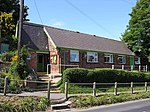Humberside

Humberside () was a non-metropolitan and ceremonial county in Northern England from 1 April 1974 until 1 April 1996. It was composed of land from either side of the Humber Estuary, created from portions of the East Riding of Yorkshire, West Riding of Yorkshire, and the northern part of Lindsey, Lincolnshire. The county council's headquarters was County Hall at Beverley, inherited from East Riding County Council. Its largest settlement and only city was Kingston upon Hull. Other notable towns included Goole, Beverley, Scunthorpe, Grimsby, Cleethorpes and Bridlington. The county stretched from Wold Newton in its northern tip to a different Wold Newton at its most southern point. Humberside bordered North Yorkshire to the north and west, South Yorkshire and Nottinghamshire to the south-west, and Lincolnshire to the south. It faced east towards the North Sea. Humberside was abolished on 1 April 1996, with four unitary authorities being formed: North Lincolnshire, North East Lincolnshire, Kingston upon Hull, and East Riding of Yorkshire. The name has continued in use as a geographical term, mainly in the media, and in the names of institutions such as Humberside Police and Humberside Fire and Rescue Service. These institutions did not change their names mainly due to costs. There were proposals to merge the police force with other Yorkshire forces and then change all the forces' names accordingly. However, these proposals were later ruled out.Humber Enterprise Zone was launched in 2012 to encourage industrial development at 16 sites around the estuary.
Excerpt from the Wikipedia article Humberside (License: CC BY-SA 3.0, Authors, Images).Humberside
Walkington Road,
Geographical coordinates (GPS) Address Nearby Places Show on map
Geographical coordinates (GPS)
| Latitude | Longitude |
|---|---|
| N 53.8 ° | E -0.5 ° |
Address
Walkington Road
Walkington Road
HU20 3UT
England, United Kingdom
Open on Google Maps











